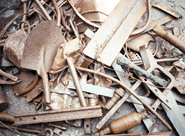Scrap Prices North America

Schnitzer Profits Soar; Cascade Returning After Fire
Written by Michael Cowden
July 1, 2021
Schnitzer Steel Industries, Inc., posted its best results in more than a decade in its fiscal third quarter thanks to high prices and strong demand for both ferrous and nonferrous scrap.
The Portland, Ore.-based scrap recycler and long steel producer recorded net income of $63.6 million in the third quarter after losing approximately $5 million in the same quarter last year.
![]() Revenue, meanwhile, ballooned to $820.7 million in the quarter, more than double $402.7 million in the third quarter of 2020, per earnings results released on Wednesday, June 30.
Revenue, meanwhile, ballooned to $820.7 million in the quarter, more than double $402.7 million in the third quarter of 2020, per earnings results released on Wednesday, June 30.
“Prices for ferrous scrap during Q3 rose to multi-year highs, continuing a trend that we saw in Q2,” Chairman, President and CEO Tamara Lundgren said during a conference call with analysts.
Case in point: shredded scrap prices stand at $500 per gross ton, more than double a 2020 low – recorded last August – of $235 per ton, according to SMU’s interactive price tool.
That’s also the highest point for shred since $565 per ton in August 2008, before the financial crisis sent tags sharply lower, per SMU records.
“Our results reflect strong global demand for recycled metals and finished steel products,” Lundgren said.
On the East Coast, export scrap sales to Turkey were higher thanks to increased demand from Turkish mills, where annual crude steel production was up 21% through May, she said.
U.S. ferrous scrap is a key raw material for Turkish steel producers.
On the West Coast, export scrap sales to Asia were also firm. And that trend should prove durable thanks to China’s removal of a steel export rebate tax, which – paired with increasing steel demand in China – should lead to an overall increase in ferrous scrap demand in Asia, Lundgren said.
Scrap demand within the U.S. is also strong as steel mill capacity utilization approaches pre-pandemic levels of approximately 83%. “Demand for material continues to be broad-based, and we expect it to strengthen as auto production accelerates,” she said.
Turning to finished steel, Lundgren noted that Schnitzer’s Cascade Steel mill in McMinnville, Ore., was recovering from a fire in late May. “There was no significant impact to our third-quarter results, and we expect the melt shop to resume operations in late August or early September,” she said.
Cascade Steel, an electric arc furnace (EAF) mill, makes rebar, coiled rebar, hot-rolled bar and wire rod. It is among the relatively few melt shops in the western U.S. and western Canada.
Lundgren also touted Cascade’s green credentials, noting that an EAF powered mostly by hydroelectricity – a big power source in the region – has an “exceptionally low” carbon footprint.
“As we return to full operations at our steel mill, we expect demand for our finished steel products to remain strong,” she said.
By Michael Cowden, Michael@SteelMarketUpdate.com

Michael Cowden
Read more from Michael CowdenLatest in Scrap Prices North America

HRC vs. scrap spread widens over $150/ton in March
The HRC vs. prime scrap spread increased again in March.

HRC vs. prime scrap spread increases in February
The price spread between hot-rolled coil (HRC) and prime scrap widened in February ahead of the implementation of President Trump’s tariffs on steel.
HRC vs. prime scrap spread narrows again in January
The price spread between hot-rolled coil (HRC) and prime scrap continued to narrow in January, according to SMU’s most recent pricing data. While SMU’s average HRC price edged down week over week (w/w), it rose compared to a month ago. The January price for busheling also increased from December. Our average HRC price as of […]

HRC vs. prime scrap spread flat in November
The price spread between hot-rolled coil (HRC) and prime scrap remained the same in November as both tags were at the levels seen a month earlier, according to SMU’s most recent pricing data.

HRC vs. busheling spread narrows slightly in October
The price spread between hot-rolled coil (HRC) and prime scrap narrowed marginally in October, according to SMU’s most recent pricing data.
